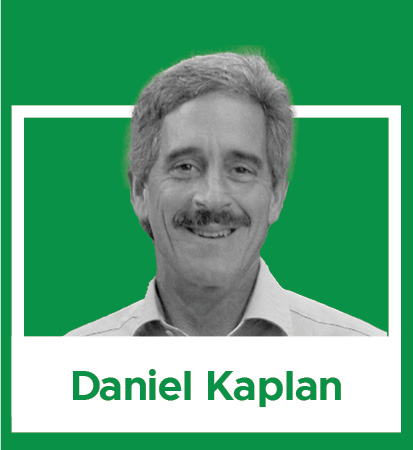Environmental behavior and remediation of contaminated sites with cationic radionuclides: The cases of Cs and Sr
A discussion of the current understanding of cesium and strontium behavior in complex contaminated sites, including data on the deposition, distribution, fate, and transport; permeable reactive barriers; and emerging remediation strategies.
February 14, 2023
Recording
Presentations
Seminar Abstract
Radioactive cesium (137Cs) and strontium (90Sr) are common contaminants in many environments around the world. The production of nuclear weapons in the U.S. has resulted in significant amounts of these contaminants at the Hanford and Savannah River sites. More recently, the 2011 Fukushima accident in Japan released the largest quantity of radionuclides into the terrestrial environment since the 1986 accident at Chernobyl. The Fukushima accident resulted in elevated 137Cs levels in forests, agricultural lands, grasslands, and urban areas, which subsequently migrated through soil and waterways in the region.
Our speakers discussed the current understanding of Cs and Sr behavior in complex contaminated sites, including experimental, modeling, and monitoring data on the deposition, distribution, fate, and transport of these radionuclides; the role of permeable reactive barriers; and emerging remediation strategies for cationic radionuclides under different environmental conditions.
Held on Tuesday, February 14, 2023, on ZoomGov, this seminar and panel discussion were presented by the Center for the Remediation of Complex Sites (RemPlex).
Speakers:
 |
Professor Yuichi OndaCenter for Research in Isotopes and Environmental DynamicsUniversity of Tsukuba, JapanCs Fate and Transport at the Fukushima Site, Japan: The 2011 Fukushima Daiichi Nuclear Power Plant (FDNPP) accident in Japan released the largest quantity of radionuclides into the terrestrial environment since the 1986 accident at Chernobyl. This accident resulted in 2.7 PBq of 137Cs contaminating forests, agricultural lands, grasslands, and urban areas, then subsequently migrating through soil and waterways in the Fukushima Prefecture. Prof. Onda and colleagues in Japan have worked intensively to generate knowledge regarding the deposition, distribution, and transport of fallout radionuclides, especially 137Cs, in the terrestrial environment after the FDNPP accident, which were revealed by extensive and continuous environmental monitoring. The researchers present evidence that anthropogenic activities, high run-off, and steep topography led to a rapid decline in the activity concentration of 137Cs in soils and rivers, especially in the first year after the accident. The decline in exposed radioactivity was notably faster than that measured after the Chernobyl Nuclear Power Plant accident, likely because of differences in geography and climate, and the intensive remediation activities at Fukushima. These researchers also found that forests in Fukushima have retained a notable amount of 137Cs in the upper centimeters of soil that could persist as a source of cesium into rivers. The site is monitored continuously to collect long-term data to understand the complex behavior under different environmental conditions. |
 |
Daniel I. Kaplan, PhDSavannah River Ecology LaboratoryUniversity of GeorgiaField Demonstration of Reduced Biological Uptake and Immobilization of 137Cs Using Illite Clay Additions: The objective of this field study was to evaluate the addition of micaceous minerals to a 137Cs-contaminated aquatic system on the Savannah River Site to serve as an effective in situ immobilization technique. The field study was conducted over a 2-year period and incorporated sixteen 3.3-m-diameter column-plots (limnocorrals) that were randomly placed in a 137Cs-contaminated pond. In the treated limnocorrals, 137Cs concentrations were reduced by 25- to 30-fold in the water, 4- to 5-fold in aquatic plants, and 2- to 3-fold in fish. The addition of the amendment did not adversely affect water chemistry, although increased turbidity and subsequent siltation did alter the aquatic macroinvertebrate insect community. This in situ technology provides a valuable, less environmentally intrusive alternative to costly ex situ technologies. |
 |
Jim Szecsody, PhDEnvironmental Subsurface SciencePacific Northwest National Laboratory90Sr Subsurface Remediation in the Hanford 100-N Area Using Apatite: A permeable reactive barrier was emplaced at the Hanford Site’s 100-N Area to immobilize 90Sr in groundwater and in the periodically rewetted zone. This barrier was emplaced by injection of liquid amendments (Ca-citrate, Na-phosphate), which slowly precipitate apatite. Then the 90Sr is incorporated into the apatite structure. This presentation describes a) the biogeochemistry used to inject the amendment solution then slowly precipitate apatite, b) the mechanisms and rate at which 90Sr is incorporated into the apatite barrier, and c) field-scale performance. The technology was initially tested at multiple laboratory scales then through two pilot-scale field tests before implementation through a series of wells along a 300-ft section near the Columbia River in the 100-N Area. |
Additional Panelists:
- Dr. Pieter Bots (Scientific Fellow), University of Strathclyde, Department of Civil and Environmental Engineering, Glasgow, Scotland, United Kingdom
- Professor Andy Cundy (Research Director, GAU-Radioanalytical), Director of the SPITFIRE/INSPIRE DTP, School of Ocean and Earth Science, National Oceanography Centre (Southampton), University of Southampton, United Kingdom